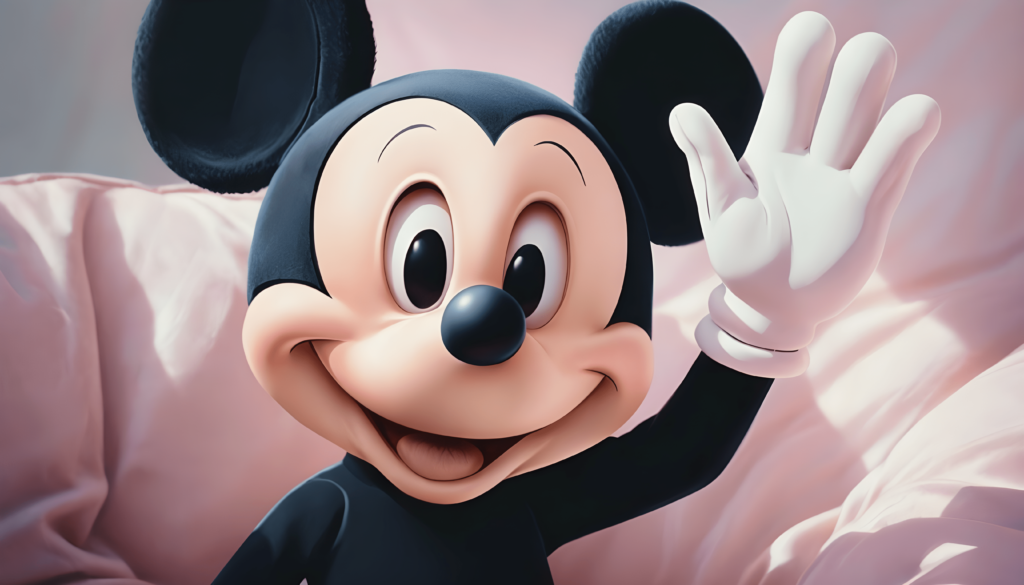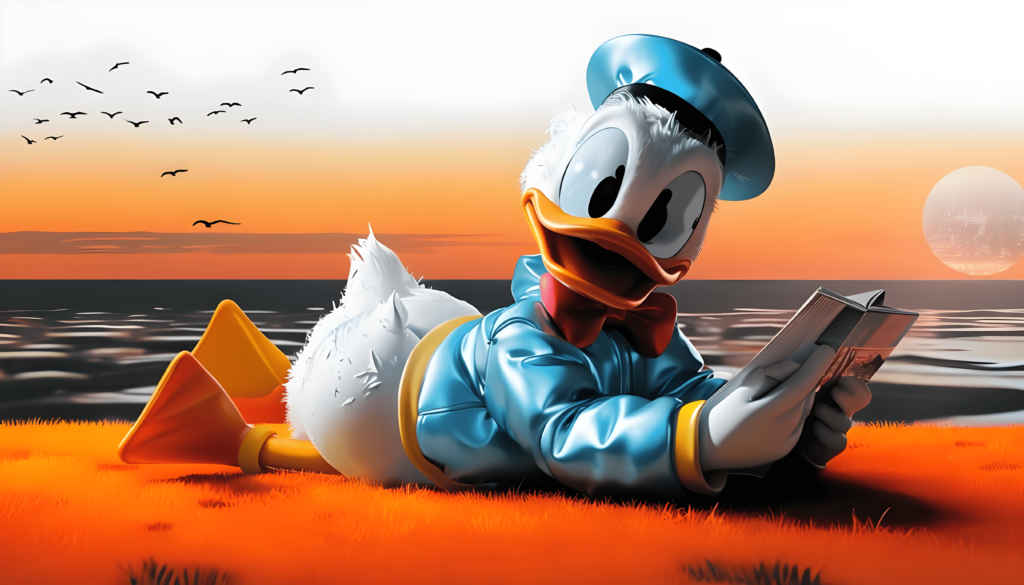
We all love Mickey Mouse. He is our childhood hero. He gives us a lot of memorable moments that feel delightful, right?
But do you know? How much effort did it take Walt Disney to introduce our lovable Mickey in Steamboat Willie 1928?
It was 1928; that was the year when it all started. Walt Disney lost his cartoon, Oswald the Lucky Rabbit, and most of his fine artists in the legal battle with Universal distributor Charles Mintz.
Things were at their lowest ebb, a very tough time for Walt Disney. He was going from Manhattan to Hollywood, and then something magical happened to him.
Walt Disney came up with a new character—a cartoon character who was looking like a mouse. The idea (mouse) was magical, but it was also very vague. So, to make it clear, he started improvising the character. Then later, it was refined by UB Iwerks.
After a lot of hard work, Walt Disney and Ub Iwerks were ready to introduce the character to the world. But here comes a problem. Find out from Walt Disney’s wife, Lillian Disney. The problem was the name of the character. Walt gave the name Mortimer Mouse. Lillian was not satisfied with the name, so she named it Mickey Mouse. It is not wrong to say that she did justice to the whole effort of Walt Disney.
The name issue was resolved. But the battle had just started. One by one the premieres of Mickey Mouse flopped.
The very first one was Plane Crazy, and the second one was The Gallopin Gaucho. The situation and people made Walt reconsider his cartoon character.
Walt had a strong belief in his character. Then the third premiere happened—”Steamboat “Willie“ on November 18, 1928, in New York’s Colony Theatre—and it had turned out to be an unforgettable, vast success of the Mickey Mouse cartoon.
It was the first ever cartoon that successfully utilized synchronized sound and created history.
Mickey Mouse was a child for Walt Disney. We can see it clearly; if you analyze Steamboat Willie carefully, you can find it.
In Steamboat Willie, Mickey Mouse, as a cartoon, behaved like an unaware, enthusiastic, playful, curious child. In the way he did some problematic things in Steamboat Willie. But you can ignore them, knowing Mickey did all that stuff in innocence and unawareness.
Let’s analyse Steamboat Willie one step deeper.
Firstly, let’s talk about all the characters who showed up in the short film.
STEAMBOAT WILLIE CHARACTERS
1. Mickey Mouse
Appearance:
Unlike today, Mickey belonged to the black-and-white era. His design followed the rubber hose animation style, with rounded ears, oval eyes, and no gloves on his hands. He wore a small cylindrical cap and short pants with two buttons and had a long, thin tail. His face featured a tiny, cylindrical nose—simple yet iconic—in Steamboat Willie 1928.
Behavior traits:
When it comes to his behavior, Mickey is known for being optimistic, cheerful, and full of youthful energy. He’s playful, fun-loving, curious, and often mischievous.
2. Minnie Mouse
Appearance:
Minnie Mouse has round ears and prominent eyelashes that give her a distinctly feminine look. She has oval eyes, a small nose, and wears a bowler-style hat with a flower sticking out on a bendy stem. She wears a short skirt and high heels, carries a rolled-up musical scroll on her back, and holds a musical instrument in her hands.
Behaviour traits:
She carries a sense of urgency in her behaviour, yet turns romantic and soft whenever she sees Mickey. Minnie is playful. expressive, a little shy at times, and always full of playfulness. her movements.
3. Pete
Appearance:
He is an anthropomorphic cat with a large, bulky build, broad shoulders, and a thick tail. He wears overalls with two buttons and a single strap, along with big boots on his feet.
Behaviour traits:
He carries an authoritative and dominant presence, with an irritable expression that often shifts into anger with ease.”
Some secondary characters like
Cow
Parrot
Cat
Duck
Goat
Pigs
We got familiar with all the main characters of Steamboat Willie. Now, it’s time to understand the scenes I was talking about.
1. Scene - 1

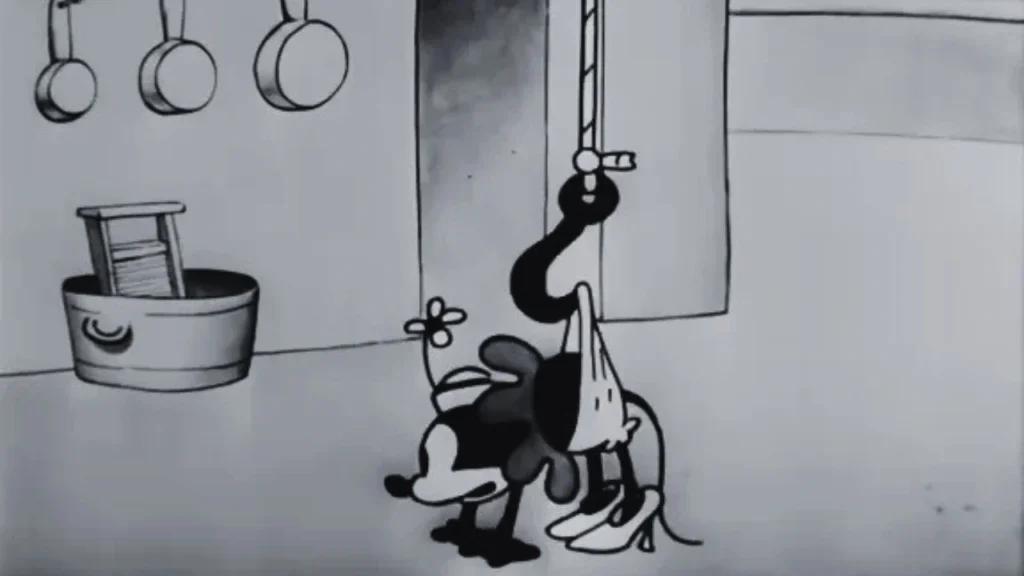
In Steamboat Willie (1928)—It’s a scene where Mickey successfully loads all the animals onto the boat and gets ready to depart from the port. Just then, Minnie comes running—she’s missed catching the boat.
From her arrival, we can notice two things: first, she seems to be heading for her music class, and second, she clearly carries a sense of urgency from the very beginning.
As Minnie misses the boat, Mickey—now acting as the captain—wonders how to get her onboard.
In the next moment, he quickly spins the crane. The crane’s hook reaches down and gently lands on Minnie’s head. Then, in a humorous twist, the hook slides up her skirt and gets caught on her undergarment.
The crane lifts her up and safely lands her on the boat. An animated touch shows the crane panicking—as if from Mickey’s point of view. In a quick reflex, it unhooks from her and slides her skirt back down, completing the moment with comic timing.
This scene highlights Mickey’s childish nature. He struggles to differentiate between what’s acceptable and what’s not. We all know he just wants to help—especially when it comes to Minnie. But he simply isn’t mature enough to do it the right way.
2. Scene - 2
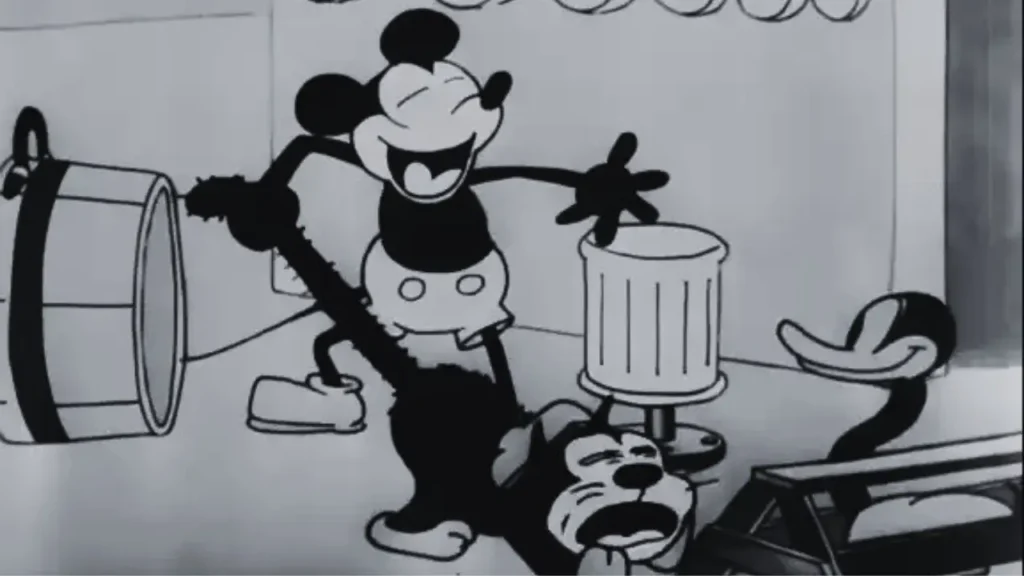

Now comes a second scene we are about to discuss.
When Minnie landed on the steamboat, her musical scroll and instrument slipped from her hands and fell. A goat already on board noticed it and started eating them. Minnie panicked. Mickey, as always, came to her rescue. He opened the goat’s mouth, and to everyone’s surprise, music came out. Minnie instantly forgot her worry and started enjoying the moment with Mickey.
Mickey, being playful, got creative with the music. He began making sounds using whatever was around—like a drum, a washing bucket, and random objects. While doing this, he noticed a cat passing by. Without thinking much, he placed his foot on the cat and stretched it to make a sound. The poor cat got hurt. But Mickey didn’t stop. He then grabbed a duck by the neck and pulled it harshly, again just to create more sound—for the sake of fun and music.
This moment is both funny and a bit uncomfortable. It shows Mickey’s playful and mischievous side but also reminds us how early cartoons often crossed lines between fun and cruelty without much thought.
3. Scene - 3
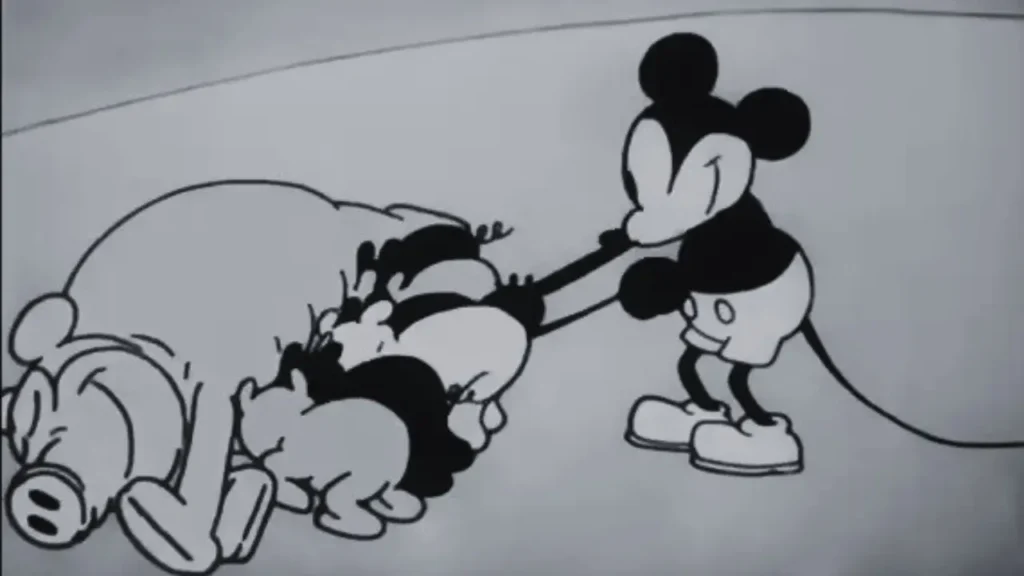

Another scene that I found troublesome in Steamboat Willie (1928).
In this scene, Mickey has done something that was considered funny back then, but now it makes you feel uncomfortable.
So while the piglets have been peacefully having milk from their mother, Mickey has pulled them all away without any hesitation.
He has then picked up the mother pig and pressed her breast with his finger—just to create a musical sound.
The core goal of the representation of this scene is only to show us how obsessed he is with making music.
For the sake of creating music, he can use whatever he has found around him, no matter how odd or inappropriate it might be.
Back then, scenes like this were treated as slapstick comedy, and audiences likely laughed without much thought.
But today, it has started to feel different. It’s made us question how far early cartoons have gone just to get a laugh. Mickey has always had a playful side, but in this moment, he has crossed a line between comedy and discomfort.
4. Scene - 4
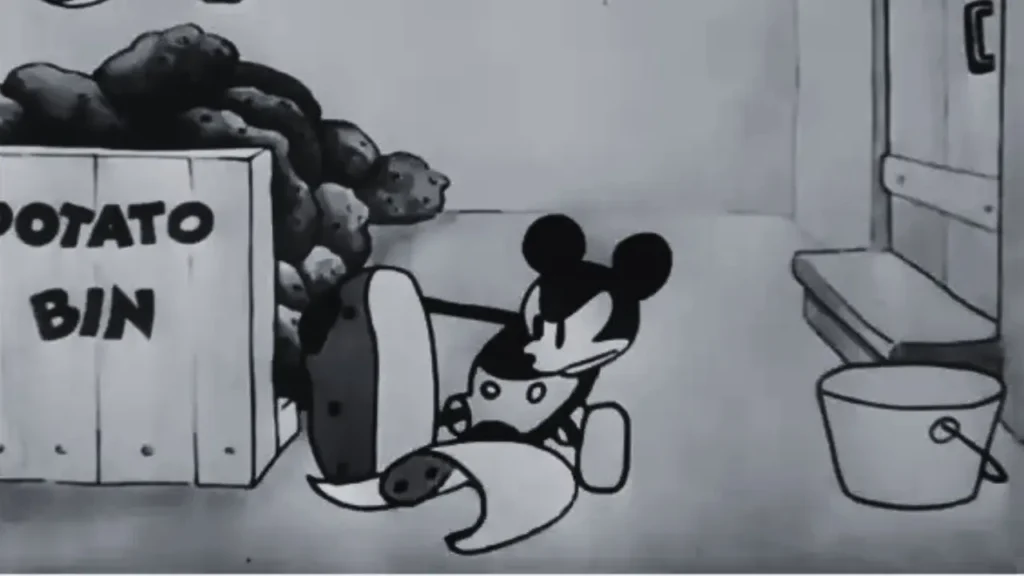
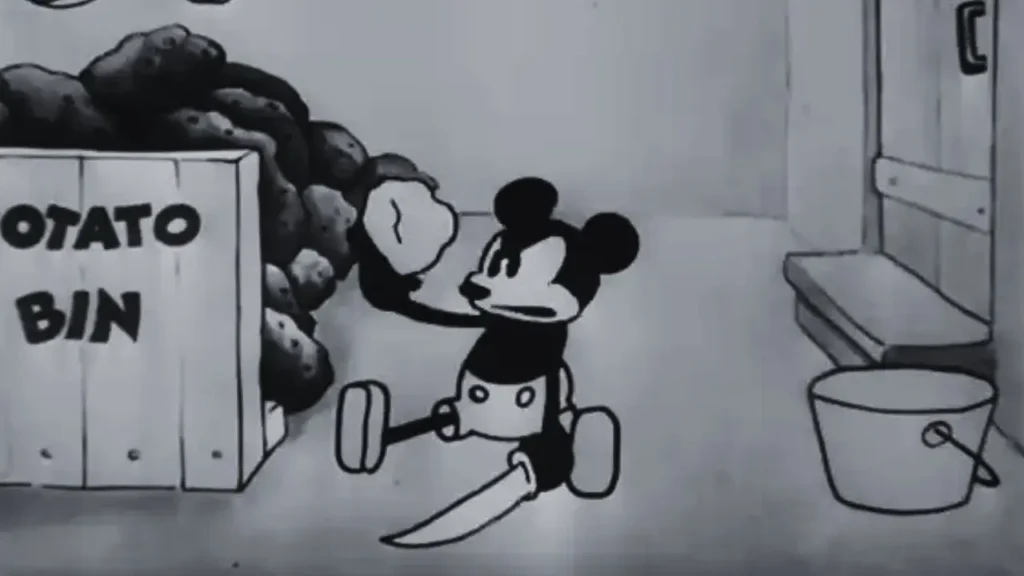
Here comes the last one, but not the least.
A big cat (Pete), the captain of the boat, found Mickey doing troublesome things—and not doing the work he was supposed to do. So as a punishment, he threw Mickey into a storeroom—to peel potatoes.
Mickey, being a child, was so angry. In that way, he peeled the potatoes and wasted a lot of edible chunks of them.
In this particular scene we can see how Mickey wasted food—that is not considered a good habit.
These are the few scenes I found troublesome. That a cartoon character just can’t behave like that nowadays.
Steamboat Willie was one of the initial films on Mickey—it’s a successful one we can forget.
That’s why it’s my perspective; Walt Disney introduced him as a newborn child. Who makes mistakes in innocence and isn’t fully aware of what he is doing—in a manner of his curiosity.
From Steamboat Willie 1928 to today’s Mickey. Mickey has evolved upside down. He is more responsible now.
But it is a take on what happens when you give liberty to your character to behave like a newborn child. Gradually, if you find something wrong with your character, you have to give them space and time to evolve.
Evolution is the thing that only matters. It is the journey as a character and as a creator, who it all started with, and how it is all going.
NOTE: ALL THE IMAGES ARE TAKEN FROM THE RESPECTED SOURCE FOR THE EDUCATIONAL PURPOSE.

